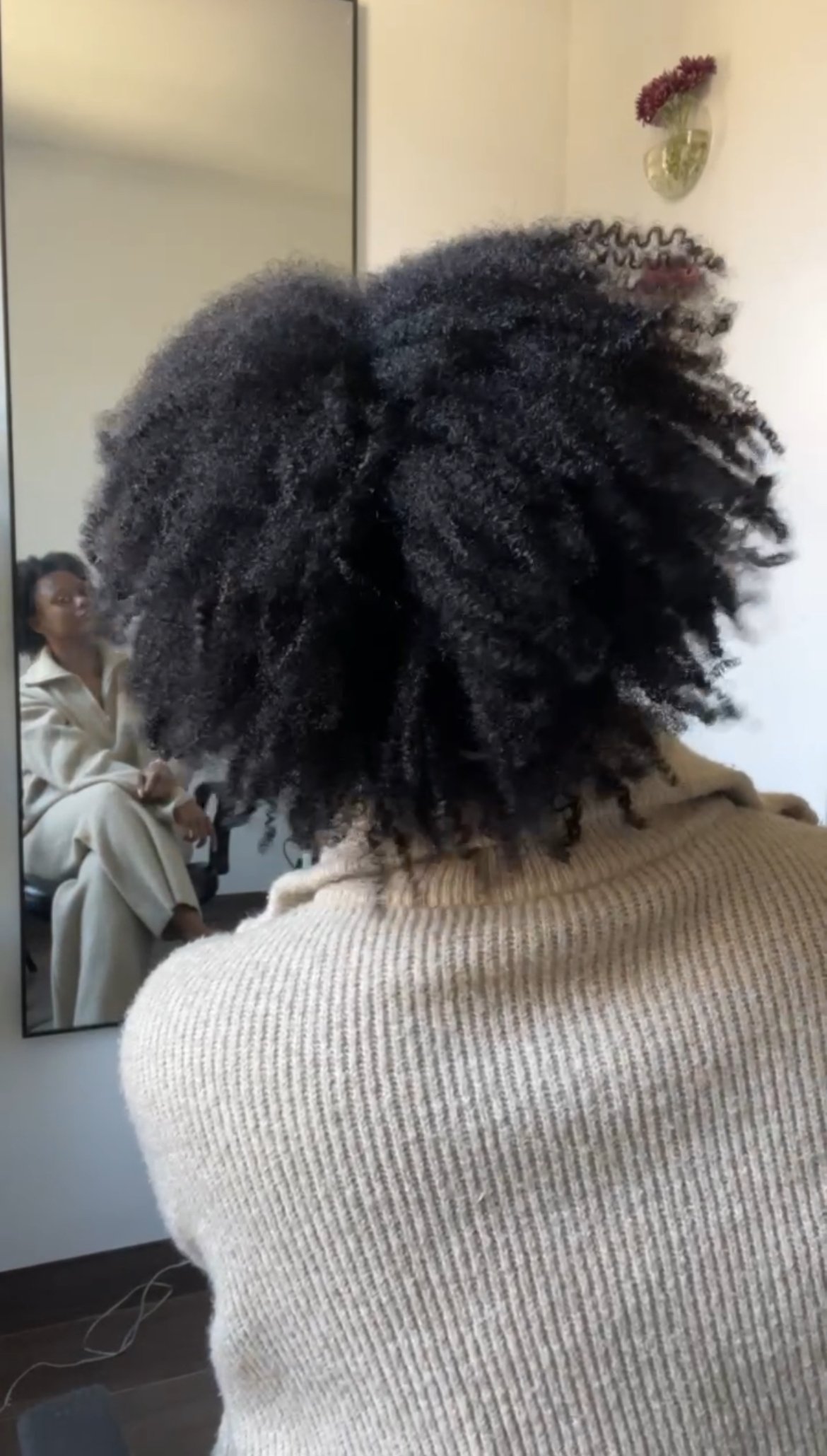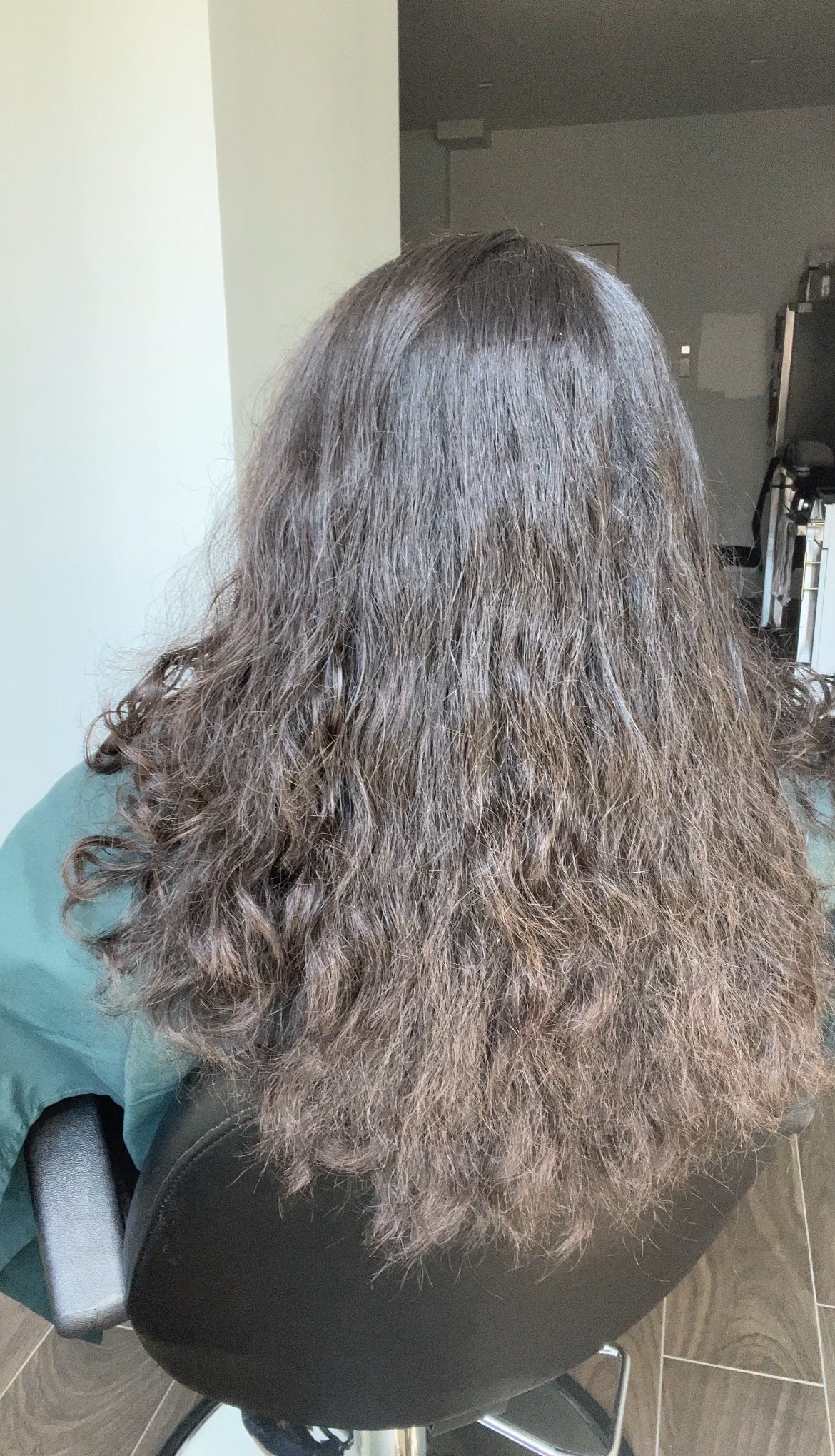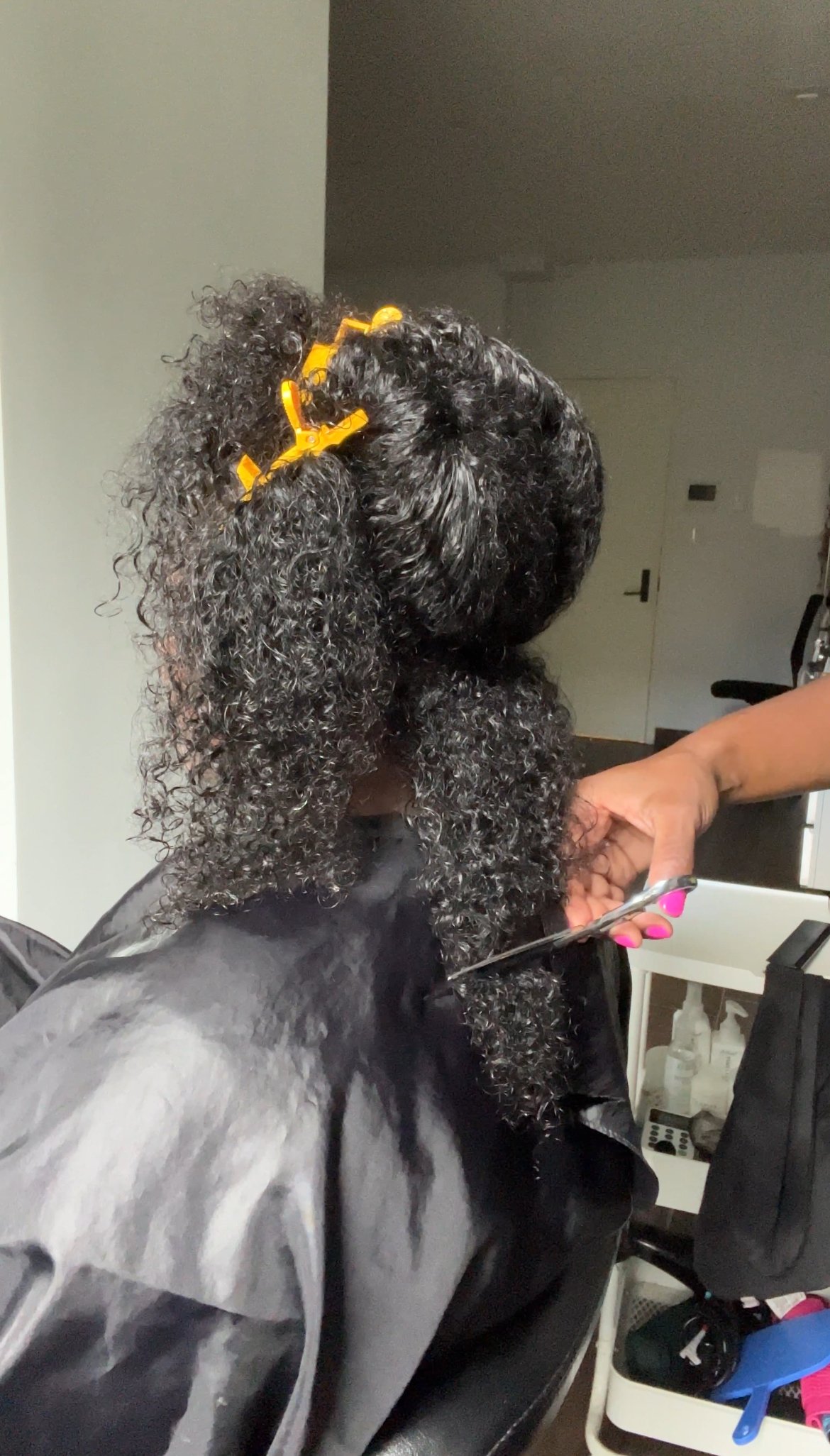Why Your Hair Texture is Changing
Understanding and Managing Changes in Hair Texture:
A Guide for Curly Hair
*This post contains affiliate links*
Curly hair has always been a topic of discussion and fascination. Although it looks beautiful, managing curly hair can be quite challenging for many individuals. One of the biggest struggles that people with curly hair face is dealing with changes in their hair texture.
Just like any other part of our body, our hair also goes through changes due to various reasons such as hormonal imbalances, aging, environmental factors, and even lifestyle choices.
When these changes occur, it can be frustrating and overwhelming for those with naturally curly hair to maintain their desired look. That's why understanding and managing changes in hair texture is crucial for people who have curly hair.
In this guide, we will discuss the common causes of changes in hair texture, how to identify them, and ways to manage these changes to maintain healthy and beautiful curly hair.
What is hair texture?
Hair texture is the natural pattern or shape of an individual's hair strands. It is determined by the shape and size of the hair follicle, which can vary from person to person. Hair texture can range from straight to curly, with various degrees of waviness in between.
The three main categories of hair texture are straight, wavy, and curly, and within these categories, there are subcategories based on the tightness or looseness of the curls. Each type of hair texture has its unique characteristics and requires different care and maintenance methods.
Having a clear understanding of your hair texture is essential as it helps you choose the right products and techniques to manage your hair effectively. This is especially crucial for individuals with naturally curly hair, as they often face challenges in maintaining their desired look due to changes in their hair texture.
What does it mean when your hair texture changes?
Changes in hair texture refer to any alterations or deviations from an individual's natural hair pattern. These changes can occur due to a variety of factors, including hormonal imbalances, aging, and environmental factors.
For those with naturally curly hair, changes in hair texture can mean their curls become looser or tighter, frizzier or smoother, or even straighter. These changes can be temporary or permanent, depending on the cause and severity.
It is normal for our hair texture to change over time as we age; however, sudden and drastic changes may indicate underlying issues that require attention. For instance, hormonal imbalances during pregnancy or menopause can cause changes in hair texture. Similarly, excessive heat styling, chemical treatments, and harsh hair products can also alter the natural pattern of our hair.
Understanding the cause of these changes is crucial in managing them effectively and maintaining healthy and beautiful curly hair. In the following sections, we will discuss some common causes of changes in hair texture and how to manage them.
Causes of changes in hair texture
Changes in hair texture can occur due to various reasons, let's take a closer look at these causes:
Age
As we age, our hair goes through a natural process of thinning and graying. This is because the hair follicles shrink with age, which affects the shape and texture of our hair. As a result, curly hair can become less defined and appear straighter over time.
To manage this change in hair texture, it is crucial to nourish your scalp and hair with essential nutrients and use products specifically designed for aging hair. Regular trims can also help maintain healthy-looking curls by getting rid of any split ends or damage caused by aging.
Hormonal Changes
Changes in hormone levels, such as during pregnancy or menopause, can also affect hair texture. Estrogen is known to promote hair growth and maintain its thickness and shine. Therefore, a decrease in estrogen levels during menopause can cause changes in hair texture, making it drier and more brittle.
To manage hormonal changes that affect hair texture, it is essential to consult with a healthcare professional and address any underlying issues. Additionally, using nourishing products specifically designed for dry and damaged hair can help improve the appearance of your curls.
Nutritional Deficiencies
Our diet plays a significant role in maintaining healthy hair. Nutritional deficiencies, such as a lack of protein or essential vitamins and minerals, can result in changes in hair texture. For curly hair, this may mean looser curls and increased frizz.
To prevent nutritional deficiencies, it is crucial to have a balanced diet that includes plenty of protein, iron, and vitamins A and C. You can also incorporate supplements specifically designed for healthy hair growth.
Health Conditions or Medications
Certain health conditions and medications can also cause changes in hair texture. For example, thyroid disorders can lead to thinning hair and changes in its natural pattern. Additionally, some medications may have side effects that affect hair texture.
If you suspect a health condition or medication is causing changes in your hair texture, it is important to consult with a healthcare professional for proper diagnosis and treatment.
Excessive Heat Styling and Chemical Treatments
Excessive heat styling and chemical treatments such as dyes, relaxers, and perms can cause damage to the hair cuticle, leading to changes in hair texture. This can result in weaker and more fragile curls.
To prevent these changes, it is important to limit the use of heat styling tools and opt for more natural hair care routines. When using chemical treatments, it is crucial to follow proper precautions and use products specifically designed for curly hair.
Harsh Hair Products
Using harsh hair products can strip the hair of its natural oils and cause damage to the cuticle, resulting in changes in texture. This can include shampoos with sulfates and styling products with alcohol or other drying ingredients.
To avoid this, it is important to choose gentle and nourishing hair products that are free from harsh chemicals. Look for sulfate-free shampoos and silicone-free conditioners, as well as products specifically designed for curly hair.
Can hair texture change suddenly?
Yes, hair texture can sometimes change suddenly due to various reasons. This sudden change in hair texture is often temporary and can be caused by factors such as hormonal imbalances, stress, or excessive use of heat styling tools.
For instance, some women experience changes in their hair texture during pregnancy or after giving birth due to hormonal fluctuations. Similarly, extreme levels of stress can also affect our hormones and lead to changes in hair texture.
Excessive use of heat styling tools such as flat irons and blow dryers can also cause sudden changes in hair texture. The high temperature from these tools can damage the protein structure of our hair, making it appear straighter or frizzier than usual.
It is essential to identify the cause of sudden changes in hair texture and take appropriate measures to manage them. In the next section, we will discuss some tips on how to maintain healthy and beautiful curly hair despite changes in hair texture.
Why Curly Hair needs special care
Curly hair has a unique texture that requires specific care to maintain its natural shape and health. Due to its spiral shape, curly hair tends to be drier and more prone to damage than straight hair. Therefore, it is important to use products and techniques that cater specifically to curly hair.
Additionally, the hair care industry has traditionally focused on products for straight or wavy hair, which may not be suitable for curly hair. This lack of representation has led many people with curly hair to struggle with finding the right products and techniques for their curls.
Moreover, since curly hair tends to be more delicate, harsh hair products and styling techniques can cause damage and changes in texture. Therefore, it is essential to use gentle and nourishing products that cater to the unique needs of curly hair.
Best hair routine for changing hair texture
There is no one-size-fits-all approach when it comes to managing changes in hair texture. The best hair routine for you will depend on your specific hair type and the cause of these changes. However, here are some general tips that can help maintain healthy and beautiful curly hair despite changes in texture:
Choose the right products: Use hair care products specifically formulated for your hair type. Look for ingredients like aloe vera, safflower oil, and grapeseed oil, which provide moisture and nourishment to curly hair.
Avoid heat styling: Limit or avoid using heat styling tools as much as possible to prevent further damage to your hair. Instead, opt for heatless styling methods like air-drying or using foam rollers.
Protect your hair: Use a satin or silk pillowcase and a silk scarf or bonnet while sleeping to prevent friction and breakage.
Deep condition regularly: Incorporate deep conditioning treatments into your hair care routine to keep your curls hydrated and nourished.
Consult a professional: If you are experiencing sudden and severe changes in your hair texture, it is best to consult a professional hairstylist for personalized advice and treatment options.
By following these tips and being mindful of the specific needs of your changing hair texture, you can maintain healthy, beautiful curls that reflect your unique style and personality.
What products should you use for changing hair textures?
When it comes to managing changing hair textures, the key is to use products that provide moisture and nourishment without weighing down your curls. Here are some essential products you should consider incorporating into your hair care routine:
First, a moisturizing shampoo and conditioner specifically formulated for your hair type can help maintain healthy, hydrated curls.
Second, using a leave-in conditioner or curl cream can provide additional moisture and definition to your curls. These products also act as a protective barrier against heat styling and environmental factors.
Lastly, incorporating a deep conditioning treatment at least once a week can help restore any lost moisture and nourish your hair from within. Look for deep conditioners with ingredients like keratin or protein complex for added strength and shine.
Best hairstyles for changing hair textures
Hairstyles that require minimal manipulation and heat styling are best for managing changing hair textures. Here are some low-maintenance options that can help maintain the health and shape of your curls:
Braids or twists: These protective styles not only look stylish but also keep your hair protected from environmental factors and excessive manipulation. Additionally, they can help stretch out your curls and reduce shrinkage. Plus, they are versatile and can be worn for days or even weeks.
Buns or updos: These hairstyles keep your hair tucked away and protected while also providing a sleek and polished look. They are perfect for days when you want to give your curls a break from styling.
Pineapple ponytail: This simple hairstyle involves gathering all your hair into a high ponytail on top of your head, resembling the shape of a pineapple. It helps preserve curl definition overnight and is great for maintaining second-day curls.
Scarves or headwraps: On days when you need to refresh your curls, but don't have time to wash and style, using a scarf or headwrap can be a quick and stylish solution. Simply wrap it around your head, covering your hairline and edges, for a chic look while also protecting your natural curls.
By incorporating these easy and low-maintenance hairstyles into your routine, you can maintain the health and beauty of your changing hair texture without sacrificing style. Remember to listen to your hair's needs and adjust your routine accordingly to keep those curls looking their best!
Mistakes to avoid when managing changing hair textures
When dealing with changes in hair texture, it is important to avoid certain mistakes that could potentially damage your curls. Here are some common errors to steer clear of:
Overwashing: While it may be tempting to constantly wash and style your hair, especially when dealing with changes in texture, overwashing can strip away the natural oils and moisture from your curls, leading to dryness and potential breakage.
Using harsh chemicals: Chemical treatments like relaxers or permanent color can cause significant damage and change in texture to curly hair. It's best to avoid these harsh chemicals and use natural, nourishing alternatives.
Skipping trims: Regular trims are essential for maintaining healthy hair, especially if you are experiencing changes in texture. It helps get rid of split ends and prevents further damage and breakage.
Ignoring your scalp: A healthy scalp is the foundation for healthy hair. Make sure to keep your scalp clean and moisturized by using a clarifying shampoo or scalp treatment when needed.
By avoiding these mistakes and taking care of your curls with gentle products and techniques, you can successfully manage changes in hair texture while keeping your locks looking their best.
FAQs
Should I use different products for each hair type?
It's not necessary to use different products for each hair type. However, it is important to choose products that are formulated for your specific hair needs and concerns. For example, if you have curly hair that is also damaged or color-treated, you may need a product that provides both moisture and repair.
Can changing my diet improve my hair texture?
Yes, a healthy and balanced diet can contribute to overall hair health, including texture. Consuming foods rich in vitamins and nutrients, such as leafy greens, fruits, and omega-3 fatty acids, can promote strong and healthy curls.
How often should I wash my hair?
This can vary depending on your individual hair needs and lifestyle. Some people with changing hair textures may find that they need to wash their hair less frequently, as overwashing can strip away natural oils. Experiment with different washing schedules to find what works best for you.
Can heat styling affect my changing hair texture?
Yes, excessive heat styling can damage your hair and alter its texture. It's best to limit heat usage and use protective products when using hot tools. Alternatively, opt for heatless hairstyles or use low-heat settings when possible.
Conclusion
In conclusion, managing changes in hair texture can be challenging, but with the right products and techniques, it is possible to maintain healthy and beautiful curls. Remember to listen to your hair's needs and adjust your routine accordingly.
Avoid common mistakes and opt for low-maintenance hairstyles to keep those changing textures looking their best. With patience and care, you can embrace your unique hair texture and rock any style with confidence!
So take care of your hair, nourish it from within, and embrace the beauty of your ever-changing hair texture. Happy styling!










